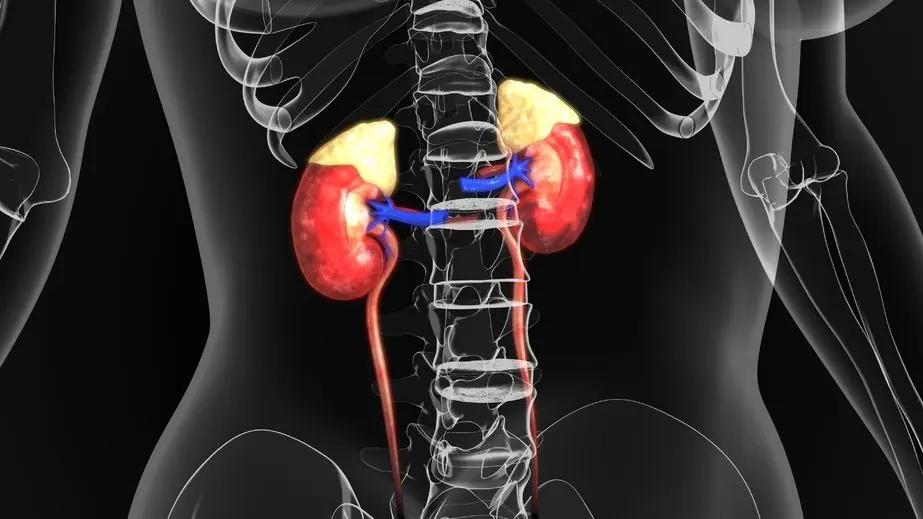
This Simple Exercise Lowers Blood Pressure as Effectively as Pills, Study Finds

The Quiet Power of Isometric Exercise: A New Approach to Lowering Blood Pressure
For decades, managing high blood pressure was largely associated with activities that got the heart racing—running, cycling, aerobics, and other high-intensity workouts. But in recent years, a quieter and less conventional form of exercise has started to gain serious attention from the medical community. It's called isometric exercise—a type of training that involves almost no movement, yet yields surprisingly powerful cardiovascular benefits.
What makes this approach so groundbreaking? It requires no gym membership, no fancy gear, and no bouncing around. Just you, your body, and a few minutes of focused effort.
What Makes Isometric Exercise Unique?
Isometric exercises differ significantly from traditional workouts. Instead of relying on repetitive motion or movement-based routines, isometric exercises involve holding muscles in a static contraction. In simple terms, you tense the muscle without moving the joint. There’s no lifting, no running, and no jumping—just holding a position.
Examples include:
-
Wall sits
-
Planks
-
Glute bridges
-
Isometric bicep curls (holding a curl at 90 degrees without moving)
While these moves may appear simple or even easy at first glance, holding them for extended periods challenges both muscle strength and cardiovascular function. The beauty lies in the stillness: a kind of strength training meditation that demands focus and endurance.
The Science Behind Stillness
So, how does standing still help reduce blood pressure?
When a muscle is contracted without movement (as in isometric training), blood flow is temporarily restricted. This restriction increases the pressure within the muscle, triggering a physiological response. Once the hold is released, blood vessels expand and relax, leading to a decrease in blood pressure.
This pattern of muscular tension followed by vascular relaxation appears to condition the blood vessels over time, improving their elasticity and responsiveness. As a result, regular isometric training can help lower both systolic (pressure during heartbeats) and diastolic (pressure between beats) blood pressure levels.
A Landmark Study Shifts the Narrative
A pivotal study published in the British Journal of Sports Medicine analyzed the effects of various exercise forms on blood pressure. It included aerobic workouts (like running), dynamic resistance training, high-intensity interval training (HIIT), and isometric routines.
The findings were clear and compelling: isometric exercises—particularly those targeting large muscle groups like the thighs—produced the greatest reductions in blood pressure. This was no small data set either; the meta-analysis drew from hundreds of studies and thousands of participants, giving the results significant weight in the scientific community.
Wall Sits: A Simple, Powerful Tool
Among all isometric exercises, wall sits emerged as especially effective. This move involves:
-
Leaning your back against a wall.
-
Sliding down until your knees are at a 90-degree angle (like sitting in an invisible chair).
-
Holding that position for a set time.
A simple protocol—two minutes on, two minutes off, repeated four times—has been shown to reduce systolic blood pressure by around 10 mmHg and diastolic by about 5 mmHg. These reductions are comparable to the effects of some first-line antihypertensive medications, but without side effects.
How to Start Isometric Training
Getting started with isometric training is refreshingly easy and accessible for people of all fitness levels.
Step-by-step wall sit guide:
-
Stand with your back flat against a wall and feet shoulder-width apart.
-
Slowly lower yourself until your thighs are parallel to the floor and your knees are at 90 degrees.
-
Hold the position, keeping your back straight and core engaged.
-
Start with 15–30 seconds, and increase over time as your strength builds.
-
Aim for 4 sets, resting 2 minutes in between.
The best part? You can do it virtually anywhere—at home, at the office, or even during a commercial break while watching TV.
Why Isometric Exercise Is So Effective
The key lies in the vascular adaptations. As muscles are held in tension, the body learns to regulate blood pressure more efficiently. Over time, blood vessels become more elastic and responsive, helping to maintain lower baseline pressure levels.
Additional benefits include:
-
Lower resting heart rate
-
Improved vascular function
-
Reduced arterial stiffness
-
Increased muscular endurance
-
Better posture and balance
Unlike many cardio routines that stress the joints, isometric training is low-impact—ideal for older adults or people with joint pain or mobility challenges.
How Isometric Exercises Stack Up Against Other Workouts
| Exercise Type | Effectiveness in Lowering BP | Example Activities | Additional Benefits |
|---|---|---|---|
| Isometric | Highest | Wall sits, planks | Strength, vascular health, posture |
| Combined Training | High | HIIT + resistance | Muscle and cardiovascular benefits |
| Dynamic Resistance | Moderate | Weight lifting, squats | Muscle mass, bone health |
| Aerobic | Moderate | Running, swimming, cycling | Endurance, fat loss, heart health |
| HIIT | Lower | Sprints, circuit training | Speed, metabolism, VO2 max |
Isometric training consistently showed superior results in reducing systolic pressure compared to all other types of exercise. For diastolic pressure, aerobic activities like running were competitive, but overall, isometric routines offered the best combined outcome.
A Practical Addition to Your Routine
According to the U.S. Department of Health and Human Services, resistance training—including isometric movements—should be performed at least twice per week in addition to regular aerobic activity.
Even 8 minutes, three times per week has been shown to bring measurable improvements. That’s just 24 minutes a week—less time than one episode of your favorite show.
Not Just for the Young or Athletic
One of the greatest advantages of isometric training is its inclusivity. It's ideal for:
-
Seniors looking to improve balance and strength
-
People recovering from injury
-
Individuals with limited time or mobility
-
Anyone who finds traditional workouts too intense
It’s a low-risk, high-reward approach that can be adjusted to fit nearly any lifestyle.
Beyond Blood Pressure: More Benefits of Stillness
In addition to cardiovascular perks, isometric exercises also enhance:
-
Muscle tone and endurance
-
Core strength and stability
-
Joint health
-
Functional fitness (e.g., standing, lifting, bending)
These gains are especially valuable as we age and strive to maintain independence, confidence, and a high quality of life.
The Future of Blood Pressure Management
As more research validates its benefits, isometric exercise is becoming a key player in the landscape of cardiovascular health. It empowers individuals to take control of their blood pressure in a safe, accessible, and sustainable way.
While it’s not meant to replace other types of exercise, it serves as a potent complement—especially for those who struggle with traditional workouts or are looking for a new strategy to push past a plateau.
No treadmill? No problem. Sometimes, the path to better health starts by sitting down… against a wall.
News in the same category


The moment you change your perception is the moment you rewrite the chemistry of your body

10 Cancer Warning Signs Women Often Overlook

Paralysed man stands again after receiving ‘reprogrammed’ stem cells

🌿 Unlock the Secret Power of Guava Leaves: Transform Your Hair, Skin & Health Naturally

🍯🌿 18 Benefits: Mix Ginger with Cloves and Honey, You'll Thank Me for the Recipe!

From Causes to Cures: Everything You Need to Know About Fatty Liver

Symptoms of prostate cancer explained as study reveals how often men should ejaculate per month to prevent it

Why Skipping Breakfast Could Be Harming Your Health: Hidden Dangers You Need to Know

Recognizing the Warning Signs of a Stroke: Why Immediate Action Can Save Lives

Nurse Who Has Seen Over 100 People Die Reveals That Everyone Says The Same Thing Before They Pass

A 48-Year-Old Man Has Been Diagnosed With Stage 4 Cancer And Has Disclosed ONE Common Symptom That He Initially Overlooked

Deaths from six cancers are rising in men and women and symptoms mean they could be easy to miss

The five shocking things that happen to your body once you stop taking Ozempic

Barbara O'Neill: "I Pray You Never Eat These Foods Again"

👣 12 Surprising Ways Your Feet Reveal Early Signs of Liver Disease

‘It’s A Common Theme’: Cancer Doctor Shares What She Regularly Sees In Her Patients Early On

Morning Routines That Keep The Mind Sharp Well Into Your 70s, According To Psychology

Recognize The Signs Of High Stress: 8 High Cortisol Symptoms
News Post

Unusual Morning Signs That May Warn of Cancer Risk

The moment you change your perception is the moment you rewrite the chemistry of your body

10 Cancer Warning Signs Women Often Overlook

Paralysed man stands again after receiving ‘reprogrammed’ stem cells

🌿 Unlock the Secret Power of Guava Leaves: Transform Your Hair, Skin & Health Naturally

🍯🌿 18 Benefits: Mix Ginger with Cloves and Honey, You'll Thank Me for the Recipe!

From Causes to Cures: Everything You Need to Know About Fatty Liver

Symptoms of prostate cancer explained as study reveals how often men should ejaculate per month to prevent it

Why Skipping Breakfast Could Be Harming Your Health: Hidden Dangers You Need to Know

Recognizing the Warning Signs of a Stroke: Why Immediate Action Can Save Lives

Nurse Who Has Seen Over 100 People Die Reveals That Everyone Says The Same Thing Before They Pass

A 48-Year-Old Man Has Been Diagnosed With Stage 4 Cancer And Has Disclosed ONE Common Symptom That He Initially Overlooked

Poisoned Easter Eggs Sent To Ex’s New Family — 7-Year-Old Passed Away

Deaths from six cancers are rising in men and women and symptoms mean they could be easy to miss

The five shocking things that happen to your body once you stop taking Ozempic

My Son Helped a Blind Old Man Pay for His Groceries – Today, a Convoy of Black SUVs Pulled Up to Our House

Granddad Forbids Anyone from Touching His Old Mattress, Girl Finds Stash There after His Death

My Stepmom and Her Adult Kids Changed the Locks After My Dad's Funeral – But My Mom Had the Final Word
